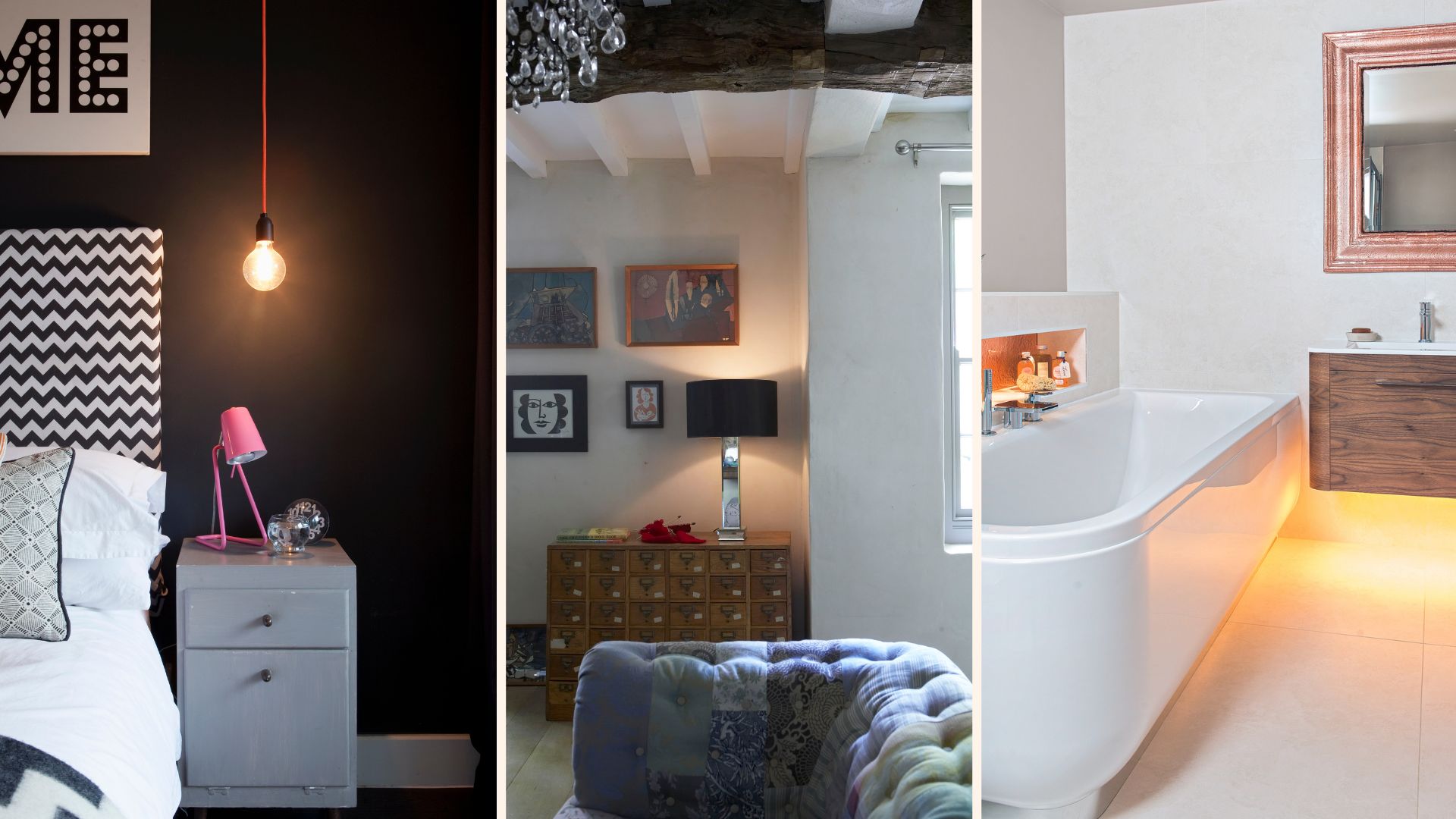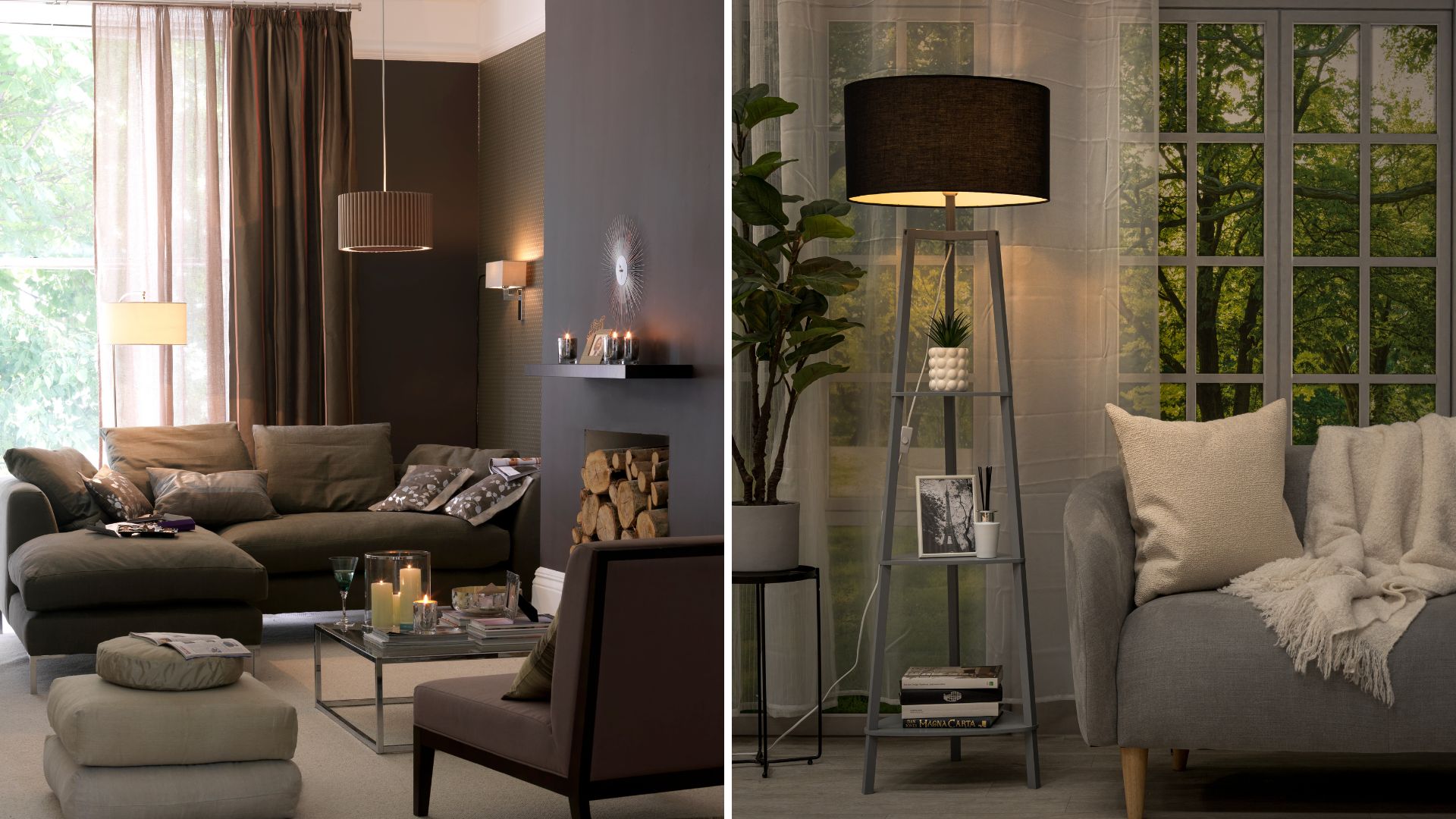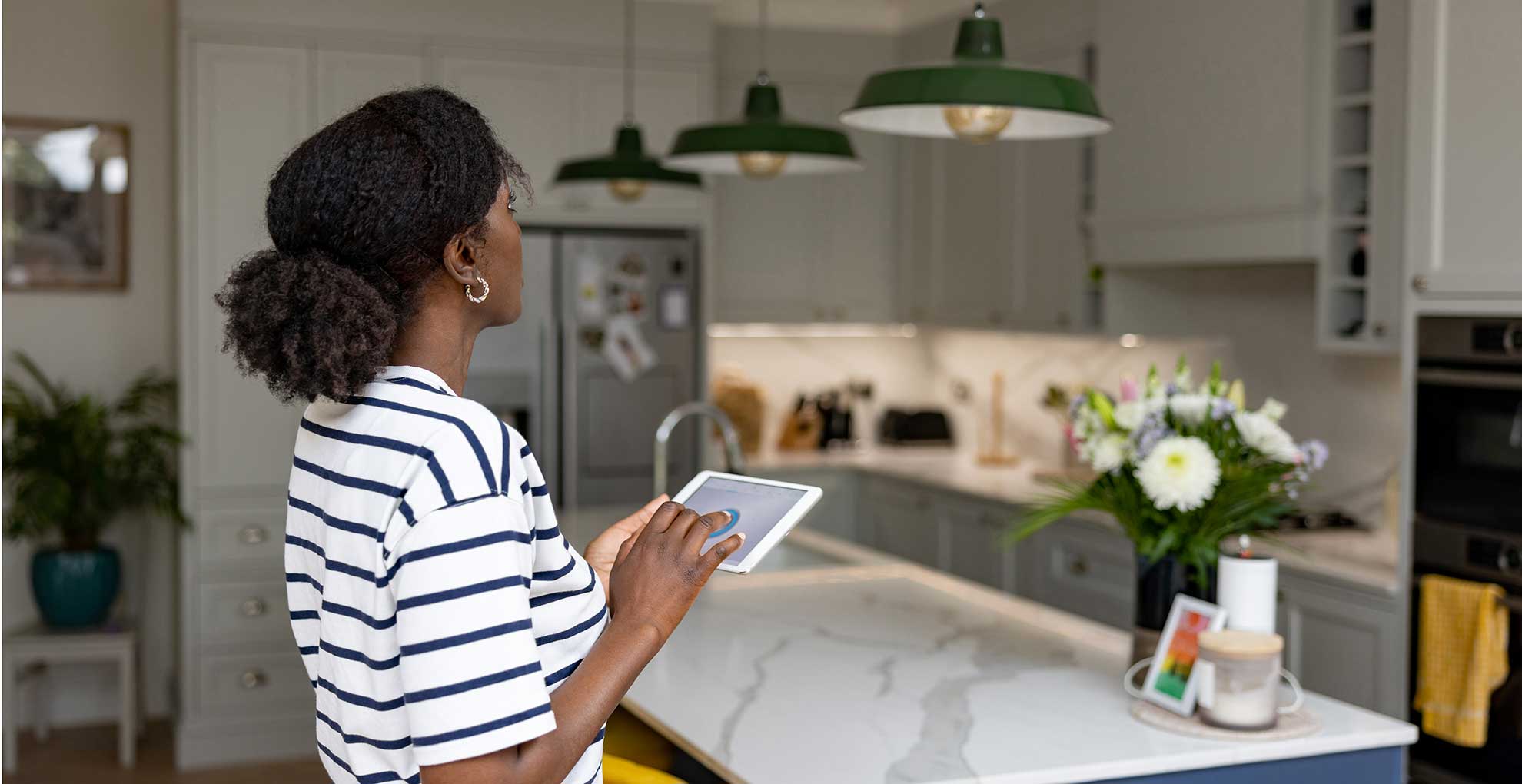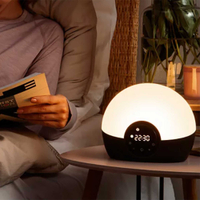5 common lighting mistakes to avoid now the days are darker
Getting the lighting right is the key to balancing the look and feel of any room – avoiding easy mistakes is crucial


The right lighting plays an integral role in any room which is why it's important to avoid common lighting mistakes that could subconsciously be affecting how you feel within the space because of the ambience.
One of the most common interior design mistakes many make is underestimating the importance of lighting, it's a classic kitchen design mistake to fall foul of and a frequently-made bathroom design mistake.
From not considering different temperatures of bulbs to misjudging the application of effective lighting solutions in different rooms, we explore 5 of the most common lighting mistakes to avoid in your home.
5 common lighting mistakes to avoid in winter
It is especially important to remember the role lighting plays in our overall mood and well-being during the darker winter months because we all become far more reliant on artificial lighting.
Creating an ambient but well-lit atmosphere is the key to making a home feel cosy while retaining positive energy in our homes during dark mornings and nights.
Here are the common lighting mistakes to avoid for a happier home during the dark months...
1. Mismatched bulb temperatures

The temperature of bulbs is essential in determining the look and feel of any lighting solution, be it overhead pendants or localised lamps avoid using the wrong-hued bulbs. This is the easiest mistake to correct, fixable by simply changing the bulbs.
Sign up to our free daily email for the latest royal and entertainment news, interesting opinion, expert advice on styling and beauty trends, and no-nonsense guides to the health and wellness questions you want answered.
“Not all bulbs are created equally, and one of the most important things to consider is the colour temperature emitted," says Marlena Kaminska, designer at lighting emporium ValueLights. "Whether you opt for warmer (lower Kelvin) bulbs or cooler (higher Kelvin) bulbs, always aim to keep this consistent across your fixtures in each room."
“Using bulbs with varying colour temperatures together in one room risks creating an inconsistent ambience and can cause subliminal stress. Installing a cool-toned ceiling light bulb in a room full of warm accent lighting, for example, will significantly disrupt the cosiness of your space and can feel confusing.”
Consider this a crucial living room mistake to make, because the aim is to make the room feel as inviting and relaxed as possible – unbalanced lighting will ruin the serenity for sure.

Dynamic digital designer with a background in interior design. Taking a lead design role at home lighting brand ValueLights, Marlena merges her interior design expertise with her digital design prowess to bring innovation and style to the world of lighting.
2. Not having control on light levels

Having the power to control light levels allows you to better balance artificial lighting to mimic natural lighting – gradually transitioning from light to dark. This can be made far easier with smart lighting and dimmer switches to offer a level of curation at the touch of a button.
“As natural light fluctuates throughout the day, your lighting at home needs to adapt to complement these changes," Marlena explains. "Not doing so can put a strain on your eyes as they struggle to adjust to the different brightness and mood levels. You may also find your lighting feels ‘loud’ which can be stress-inducing."
“Setting up timers and using smart bulbs is an easy way to elevate your everyday routine, easing you into the morning and helping you wind down at night. Similarly, dimmers allow you to perfectly adjust your lighting for every mood and occasion.”
3. Not lighting zones to suit requirements

Lighting is the key component when it comes to carving out a different atmosphere for different spaces because every room in your house has a different purpose.
In the way that a kitchen needs brighter task lights so you can see what you're cooking a bathroom requires more low-level lighting to create a relaxing, tranquil environment to wind down and relax therefore you should always seek to reflect this within your lighting scheme.
“While lighting in the kitchen needs to be bright enough to ensure precision and enhance safety, this is less important when we move into the living room," says Marlena. "Here, create a space for relaxation and socialisation by creating a warm, ambient lighting zone."
“Having lighting which matches the requirements of each room fosters a sense of balance between you and your home, inviting in a positive energy which will instantly make you feel calmer."
Like the best bedroom paint colours, the lighting is important in making bedrooms feel cosy and restful.
4. Improperly sized lighting solutions

The proportions of your light fittings and lamps are easy to overlook when curating your lighting scheme, but can cause one of the biggest aesthetic eyesores and distractions in any living space.
“Getting the scale of your lighting in alignment with your room’s layout and size is vital to ensure it creates the desired impact within your space - both practically and aesthetically," says Marlena. Mismeasuring is also one of the most common mistakes when buying a sofa because it's so easy to do.
“Try not to be too modest with your choices. Choosing a light fixture that is too small for your living room may provide inadequate illumination, leaving you with shadowy corners. Pay special attention to this in any reading spots or home offices as dim lighting makes it difficult to focus, which can cause fatigue.”
5. Misplaced light switches

Aesthetically the right light switches can hold the key to making a home look more expensive but it also pays to know where to place them also, because misplaced switches can feel incredibly jarring within the space. Not to mention it can make it harder to make adjustments as the light begins to change throughout the day.
“One of the most common lighting mistakes we see, which causes frustration, is ill-placed light switches," Marlena explains. “If you’re in the process of designing a lighting scheme, think carefully about how you can place your switches to ensure a seamless and stress-free living experience. There’s nothing more annoying than having to walk back and forth out of a room to turn your light on/off.”
How to choose the best lighting for winter well-being
“Light plays a vital role in the function of our nervous and endocrine systems and, as a result, in how we feel day to day," explains Psychotherapist, Dr Jo Gee. Recent studies of lighting in the home found that there was a significant link between low mood and inadequate home lighting.
“Many people experience a low mood in the winter months which follows a seasonal pattern and is known as Seasonal Affective Disorder. Artificial lighting in the home can be particularly important here, reversing the drop in our feel-good neurotransmitter, serotonin; a drop which comes about from the reduction of natural light.”
- Mimic natural daylight: Winter darkness can be hard for some because natural daylight plays such a huge role in our day-to-day lives. Marlena advises: “Do what you can to mimic the dynamic positioning of natural light by playing with floor lamps and table lamps throughout your rooms. If you can, choose daylight-mimicking bulbs to lower stress and boost alertness during the day. In the evening, give your eyes a break by opting instead for calming, warm-toned bulbs.”
- Balance the light for better sleep: “Light is also vital in our sleep cycles, and how much sleep we get. Circadian lighting supports our circadian rhythm, which is our body's internal clock," says Dr Jo Gee. "Both natural and artificial lighting in the home can regulate our body clock’s day/night cycles, and in turn improve sleep, mood, and our overall sense of well-being." We recommend using a specialist lamp such as the Lumie Bodyclock Glow 150 Wake up to Daylight Table Lamp at John Lewis to wake you up by mimicking natural light during the dark mornings.
Lumie Bodyclock Glow 150 Wake up to Daylight Table Lamp: £101 at John Lewis
The Class 1 graded medical device is the ideal way to introduce the benefits of sleeping and waking with a more natural light source so that you can experience a regular sleep and wake pattern during darker months. There's also a sunset function to allow you to unwind at night time, allowing your body clock to adjust to the idea of sleep.
Getting the lighting right is the easy success story of every room because it can completely transform the space in an instant. While all of the advice above is focused on addressing the darkness of winter, a good lighting scheme is essential all year round so it pays to get it right no matter what season.

Tamara is a highly experienced homes and interiors journalist with a career spanning over 22 years. Now the Lifestyle Editor of womanandhome.com, she previously spent 18 years working with the style teams at Country Homes & Interiors and Ideal Home. With these award-winning interior teams, she gained a wealth of knowledge and honed her skills and passion for styling and writing about every aspect of lifestyle and interiors.
A true homes and interiors expert, Tamara has been an ambassador for leading interior brands on multiple occasions, including appearing on Matalan’s The Show and presenting at top interior trend forecasting events such as the Autumn Fair and Spring Fair.
